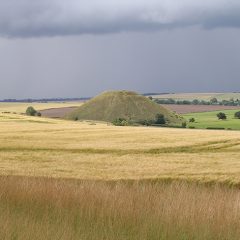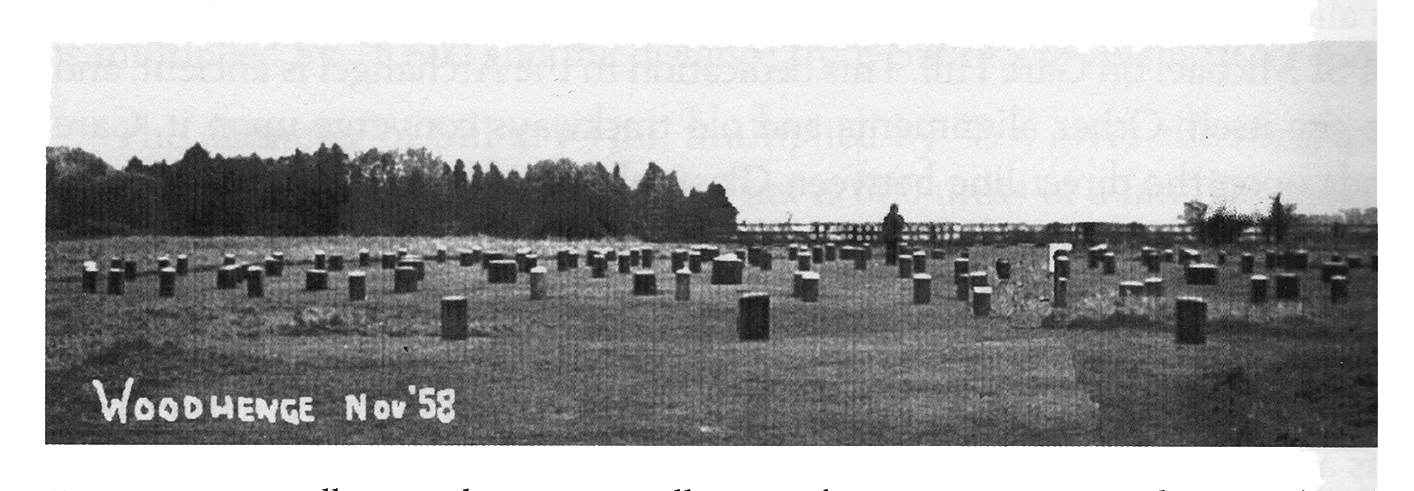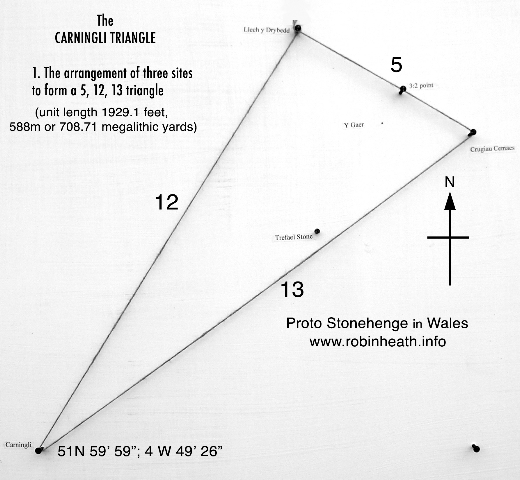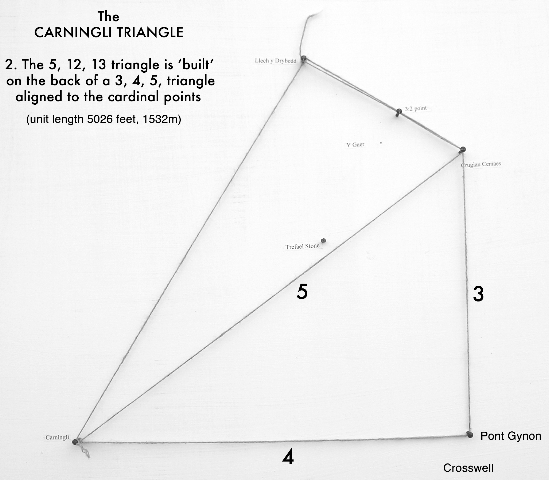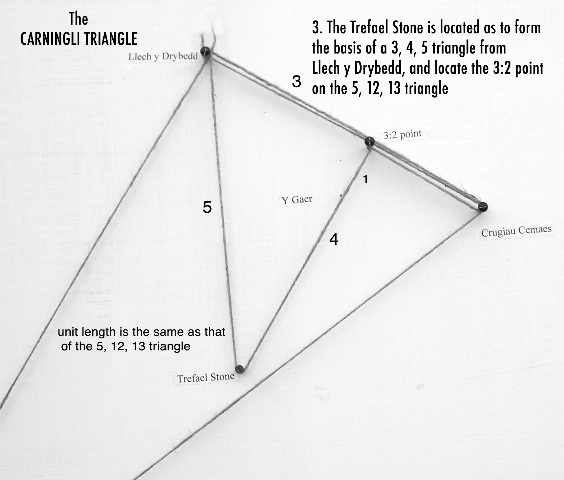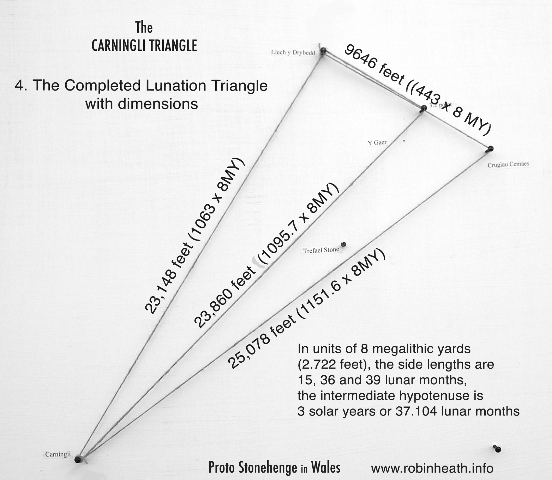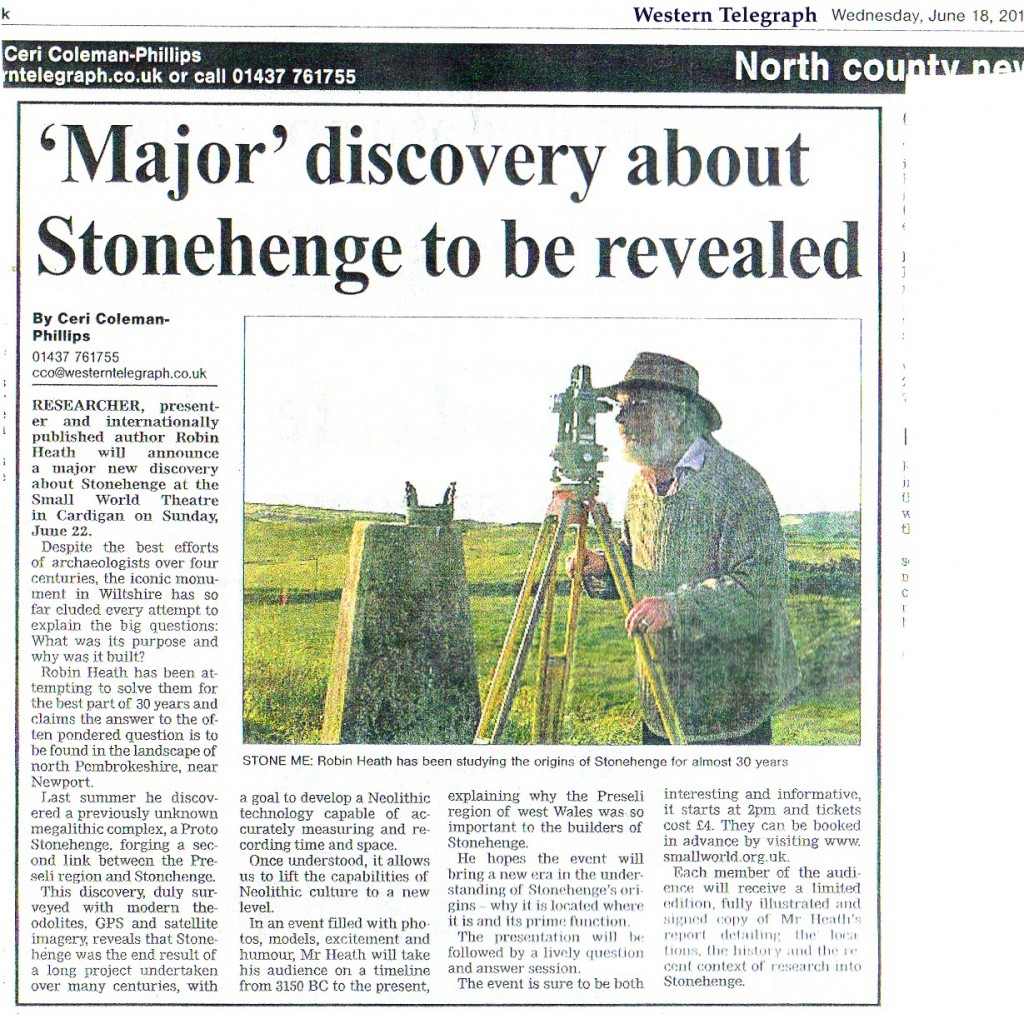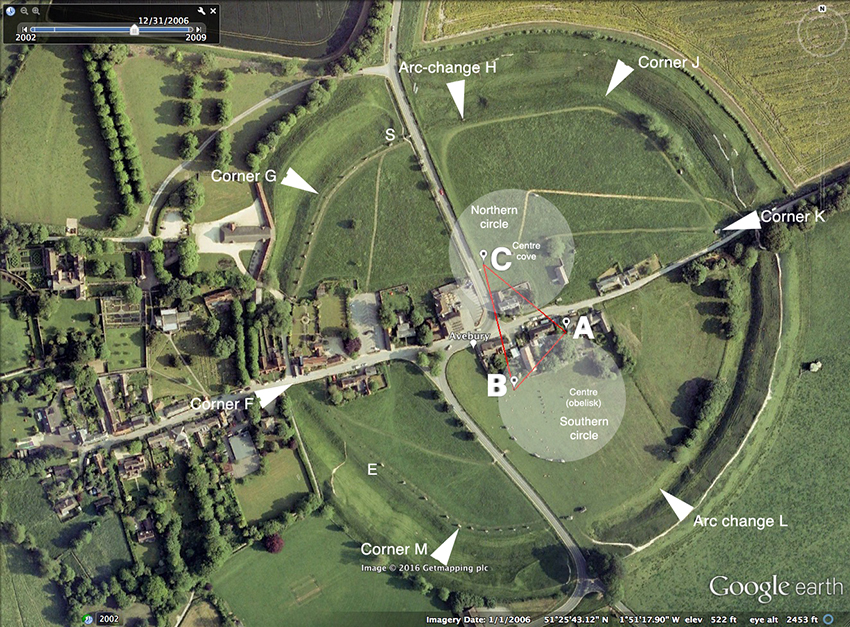
Ten Interesting Factoids about Avebury
1. Avebury is the largest known stone circle anywhere, with a surrounding ditch and bank a mile in circumference
2. The centre of Avebury is placed 4/7ths of the distance between equator and pole, at latitude 360/7*
3. A very detailed and accurate seven station closed traverse survey was undertaken by Professor Alexander Thom in 1978.
4. Thom reported that the perimeter of the outer stone ring was 1302.5 Megalithic yards (MY) of 2.722 feet, which is 3545.4 feet or 520 Megalithic rods ( 1 MR = 2.5 MY).
5. The geometry of the ring is based on a circle 200MY in radius (544 feet/ 1.66m) with centre at point D, exactly 60 MY from C (see diagram above).
6. A 3-4-5 pythagorean triangle ABC of side lengths 30-40-50 MR (75, 100 and 125 MY) defined much of the geometry. From the corners of this triangle (the stones/markers have long gone) three of the various arcs that make up the outer ring were struck. Their radii and arc lengths are as follows:
From A, B and C, each radius 260 MY, define arc FG, from A, arc HG, from B, and arc ML, from C.
In addition, there were two longer arcs struck from outside of the ring, of length 750 MY, from points W and Z (not shown on diagram). The remaining part of the perimeter is based on the forming circle perimeter, whose diameter is 200 MY..
7. The two inner circles are each 125 MY in radius and are therefore as big as any other true circle known in Britain, and the same size as the massive Ring of Brogar in the Orkneys.
8. Avebury, unlike nearly all other stone rings, has CORNERS, which demarcate the arc lengths. Thom
showed that all the arc lengths are integral in Megalithic rods, and total 1302.5 MY (521 MR)
9. Avebury is a MESS. The ring was heavily vandalised in history, has a village built within and
without it, and a major road system has quartered it (see piccy below). Most of the stones were fallen
or missing in 1930. Only nine still stood. Despite this, Alexander Keiller and other archaeologists were able to locate the majority of the remaining stone holes in the chalk and restore much of the original monument, The geometry of the original ring has since been discovered by AlexanderThom.
10. When built, the outer stone ring contained either 98 or 99 stones, some weighing over 50 tons.
AVEBURY TOUR (compressed) 2017 PDF file of full report.
